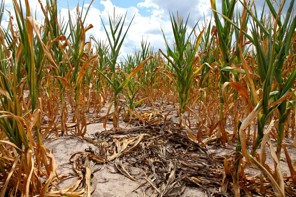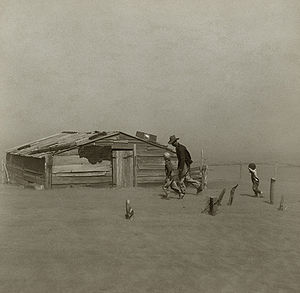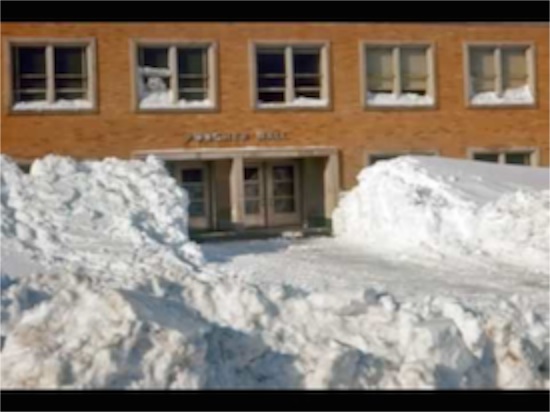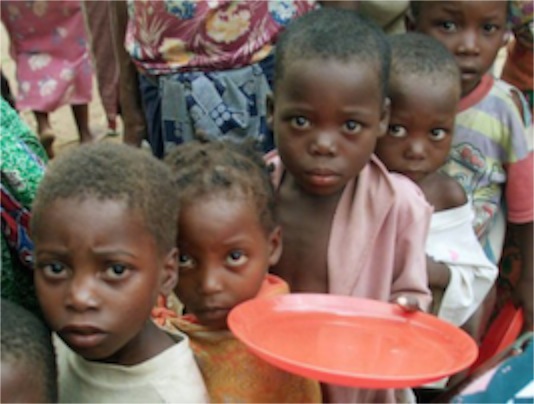Hot and Dry
17/07/12 04:34
The fact that it is hot and dry here is not much news. It has been hot and dry across most of the Midwest all summer. Temperatures are forecast to reach near 100 degrees here for the rest of the week. The weather at home is similar: hot and dry. I didn’t grow up in corn country, but it doesn’t take an expert to recognize drought stressed crops. There are fields of corn that are turning yellow long before there is anything to combine. The ground that a year ago was muddy and soupy is now cracked and parched. When that mud dries out, it turns into rock-hard clay.
 According to the National Climatic Data Center, about 55 percent of the continental United States is now designated as in moderate drought or worse, the largest percentage since December 1956. Experts, including Joe Glauber, chief economist at the USDA, say that it could get a lot worse before we see any improvement. Dry weather will create shortages of some crops. Shortages drive up the cost. Corn has risen more than 50 percent to $7.72 per bushel. Estimates are that between 10 and 20 percent of the crop is already lost.
According to the National Climatic Data Center, about 55 percent of the continental United States is now designated as in moderate drought or worse, the largest percentage since December 1956. Experts, including Joe Glauber, chief economist at the USDA, say that it could get a lot worse before we see any improvement. Dry weather will create shortages of some crops. Shortages drive up the cost. Corn has risen more than 50 percent to $7.72 per bushel. Estimates are that between 10 and 20 percent of the crop is already lost.
The high-pressure system that is parked over the Rockies looks to remain, forcing storms to go north, across Canada, instead of dropping precipitation on the nation’s midsection.
These days, there are a lot of farms that are covered by some form of crop insurance. That should provide some back up for farm families. Rising prices are good news for those who have any crops to sell. The people who are worse hit by the economic effects of the drought are the most impoverished. Poor people spend the largest amount of their total budget on food, making them the most vulnerable to the effects of higher costs. Of course it takes time for the effects of the drought to reach the grocery stores, so it will be months before we know the full effects of this summer’s drought.
Last year this part of the country was dealing with the effects of record flooding in the Missouri River basin. This year it is living with drought. It seems that the weather is never “normal.”
Back in the late 1970’s and early 1980’s, we were serving two rural congregations in Southwestern North Dakota. The economies of both communities were based in agriculture. Raising cattle for beef was the center of the ranch economy, with wheat and sunflowers being the major crops outside of hay production. In those days, my routine involved having coffee at the café most days. It was a gathering place for the community. I could see a lot of the members of my congregation by simply stopping in to the café. The talk at the café was about the weather most days. I used to joke that one thing you can count on in North Dakota is that the weather is never normal. “It didn’t used to be like this,” was a common refrain.
 But people loved to tell stories of weather extremes. “If you think this is dry, you should have been here in the ‘30’s,” they’d say. “Don’t complain about having to shovel a little snow. I was here for the Armistice Day Storm back in 1940. We had two feet of snow and 80 mile per hour winds. The drifts were up to the roof tops. We had to shovel for an hour to get out the back door.”
But people loved to tell stories of weather extremes. “If you think this is dry, you should have been here in the ‘30’s,” they’d say. “Don’t complain about having to shovel a little snow. I was here for the Armistice Day Storm back in 1940. We had two feet of snow and 80 mile per hour winds. The drifts were up to the roof tops. We had to shovel for an hour to get out the back door.”
 People could remember the spring blizzard of 1951, when it snowed continuously for four days and there was nearly 30 inches of snow on the level.
People could remember the spring blizzard of 1951, when it snowed continuously for four days and there was nearly 30 inches of snow on the level.
There is a kind of pride that develops in having survived the extreme weather. At least in the coffee shops, bragging rights are reserved for those who have stuck around long enough to have a few weather stories to tell. Perhaps we’ll be telling future generations about the floods of ’11 or the drought of ’12. We complain while we are enduring the challenges of our times, but afterwards, we are grateful to have survived. To endure in the face of hardship is an achievement.
Sure, it is hot and it is dry. And we are still here. The garden may not be much and the grass in the lawn has gone dormant, but we’re surviving. The human spirit is not easily dominated. We seem to have what it takes to hang in for the long haul.
It is simply the case that there are forces in this life that are greater than we are. Even with our sophisticated systems for weather prediction, we are still vulnerable to the effects of weather. And we do not control the weather.
So we complain – at lest a little.
 But we don’t suffer like folks in many parts of the world. We are relatively comfortable with our air conditioning and reliable vehicles that take us where we want to go in all kinds of weather. We might complain when the cost of food goes up, but we continue to have plenty to eat, even when our own gardens fail to produce much. Compared to those who are facing starvation across sub-Saharan Africa after years of drought, our sufferings are so mild as to not warrant any complaints. We are indeed fortunate when it comes to weather and to the effects of severe weather. You don’t have to look far to see people whose problems are fare more severe than anything we face.
But we don’t suffer like folks in many parts of the world. We are relatively comfortable with our air conditioning and reliable vehicles that take us where we want to go in all kinds of weather. We might complain when the cost of food goes up, but we continue to have plenty to eat, even when our own gardens fail to produce much. Compared to those who are facing starvation across sub-Saharan Africa after years of drought, our sufferings are so mild as to not warrant any complaints. We are indeed fortunate when it comes to weather and to the effects of severe weather. You don’t have to look far to see people whose problems are fare more severe than anything we face.
And the weather gives us a topic for conversation today and stories to tell in the future. Still, it would be nice to have a little rain. We watch the clouds build up in the afternoon and know we’d be happy with a thundershower. We sniff the breeze and feel the heat and long for a cool, refreshing shower. If only it would rain.
When the rains do come, we’ll have a new topic for our conversation and we can complain about the inconvenience rain causes. Regardless of the weather, we’re practiced at complaining.

The high-pressure system that is parked over the Rockies looks to remain, forcing storms to go north, across Canada, instead of dropping precipitation on the nation’s midsection.
These days, there are a lot of farms that are covered by some form of crop insurance. That should provide some back up for farm families. Rising prices are good news for those who have any crops to sell. The people who are worse hit by the economic effects of the drought are the most impoverished. Poor people spend the largest amount of their total budget on food, making them the most vulnerable to the effects of higher costs. Of course it takes time for the effects of the drought to reach the grocery stores, so it will be months before we know the full effects of this summer’s drought.
Last year this part of the country was dealing with the effects of record flooding in the Missouri River basin. This year it is living with drought. It seems that the weather is never “normal.”
Back in the late 1970’s and early 1980’s, we were serving two rural congregations in Southwestern North Dakota. The economies of both communities were based in agriculture. Raising cattle for beef was the center of the ranch economy, with wheat and sunflowers being the major crops outside of hay production. In those days, my routine involved having coffee at the café most days. It was a gathering place for the community. I could see a lot of the members of my congregation by simply stopping in to the café. The talk at the café was about the weather most days. I used to joke that one thing you can count on in North Dakota is that the weather is never normal. “It didn’t used to be like this,” was a common refrain.


There is a kind of pride that develops in having survived the extreme weather. At least in the coffee shops, bragging rights are reserved for those who have stuck around long enough to have a few weather stories to tell. Perhaps we’ll be telling future generations about the floods of ’11 or the drought of ’12. We complain while we are enduring the challenges of our times, but afterwards, we are grateful to have survived. To endure in the face of hardship is an achievement.
Sure, it is hot and it is dry. And we are still here. The garden may not be much and the grass in the lawn has gone dormant, but we’re surviving. The human spirit is not easily dominated. We seem to have what it takes to hang in for the long haul.
It is simply the case that there are forces in this life that are greater than we are. Even with our sophisticated systems for weather prediction, we are still vulnerable to the effects of weather. And we do not control the weather.
So we complain – at lest a little.

And the weather gives us a topic for conversation today and stories to tell in the future. Still, it would be nice to have a little rain. We watch the clouds build up in the afternoon and know we’d be happy with a thundershower. We sniff the breeze and feel the heat and long for a cool, refreshing shower. If only it would rain.
When the rains do come, we’ll have a new topic for our conversation and we can complain about the inconvenience rain causes. Regardless of the weather, we’re practiced at complaining.